Using Boost at Hofstra University
How Hofstra has updated the way you can order food
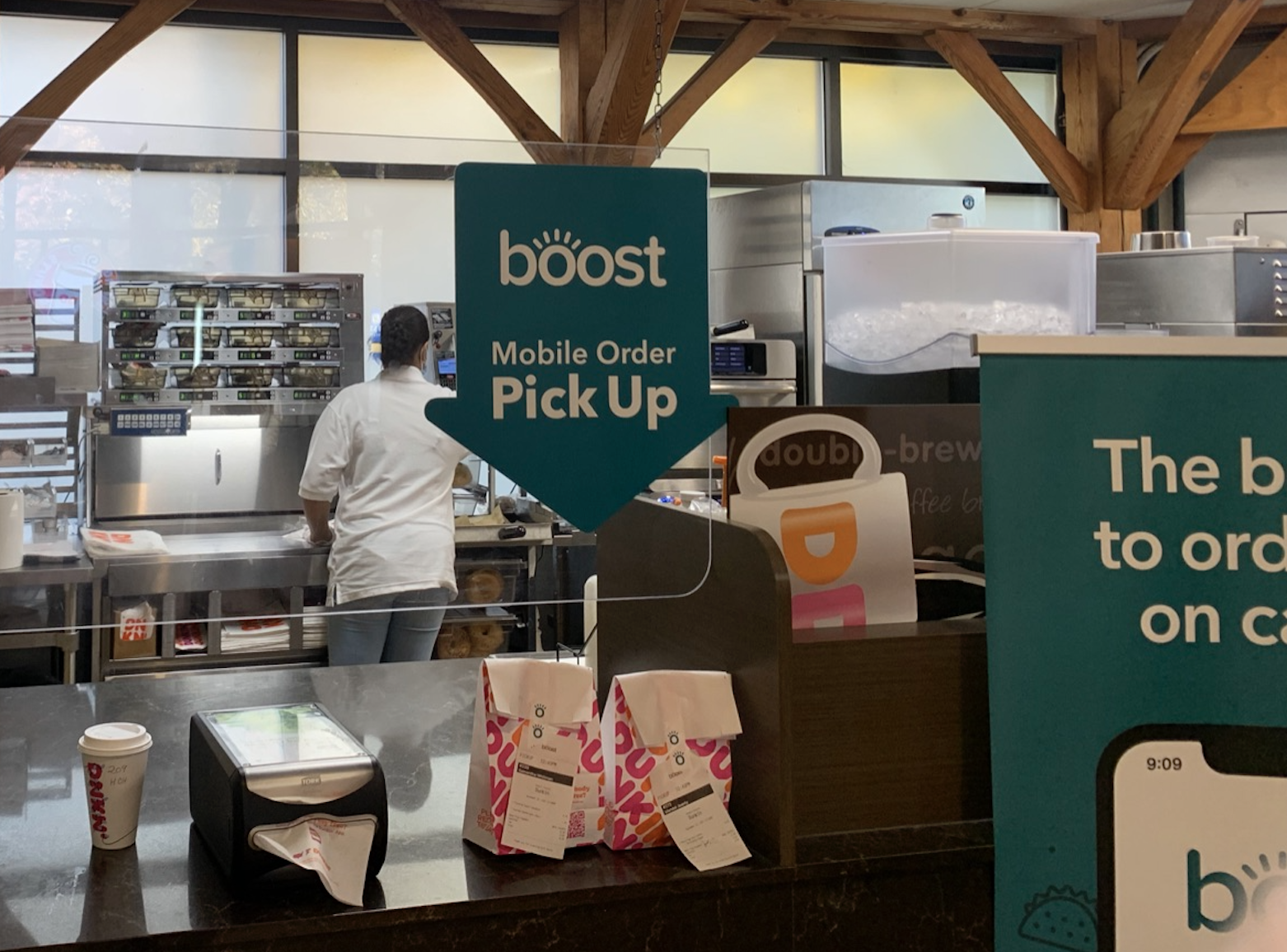
The Coronavirus pandemic changed many things in everyday life: workplace environments, school rules, the addition of a mask mandate and physical distancing. One unexpected positive to come from different societal changes was the adaptation of online food ordering, and new services created to make online ordering easier and faster.
One such addition is the Boost app. Boost is a mobile app that is used to “preorder meals from your favorite spots on campus and pay using your credit/debit card or meal plan,” according to the description of Boost on the App Store. “Boost offers convenience, options, and fat service at your fingertips, leaving more time for studying, seeing friends, and enjoying life on campus.”
Boost was created by Compass Digital Labs about 5 years ago, “to help students get their food faster in a simple and efficient way,” said Boot representative Claire Whiskin. “Each year, Boost is added to more campuses across North America, and we are currently supporting over 90 campuses between the US and Canada.”
Hofstra has Boost pickup in several locations, including Brooklyn Slice, HofUSA, Revolution Noodle and Sushi, Build Your Own Burger at Bits and Bytes, Einstein Bagel Bros, Starbucks, and Dunkin Donuts. Each location appears as its own section in the app, and each menu displays the different customization options and availability of each item.
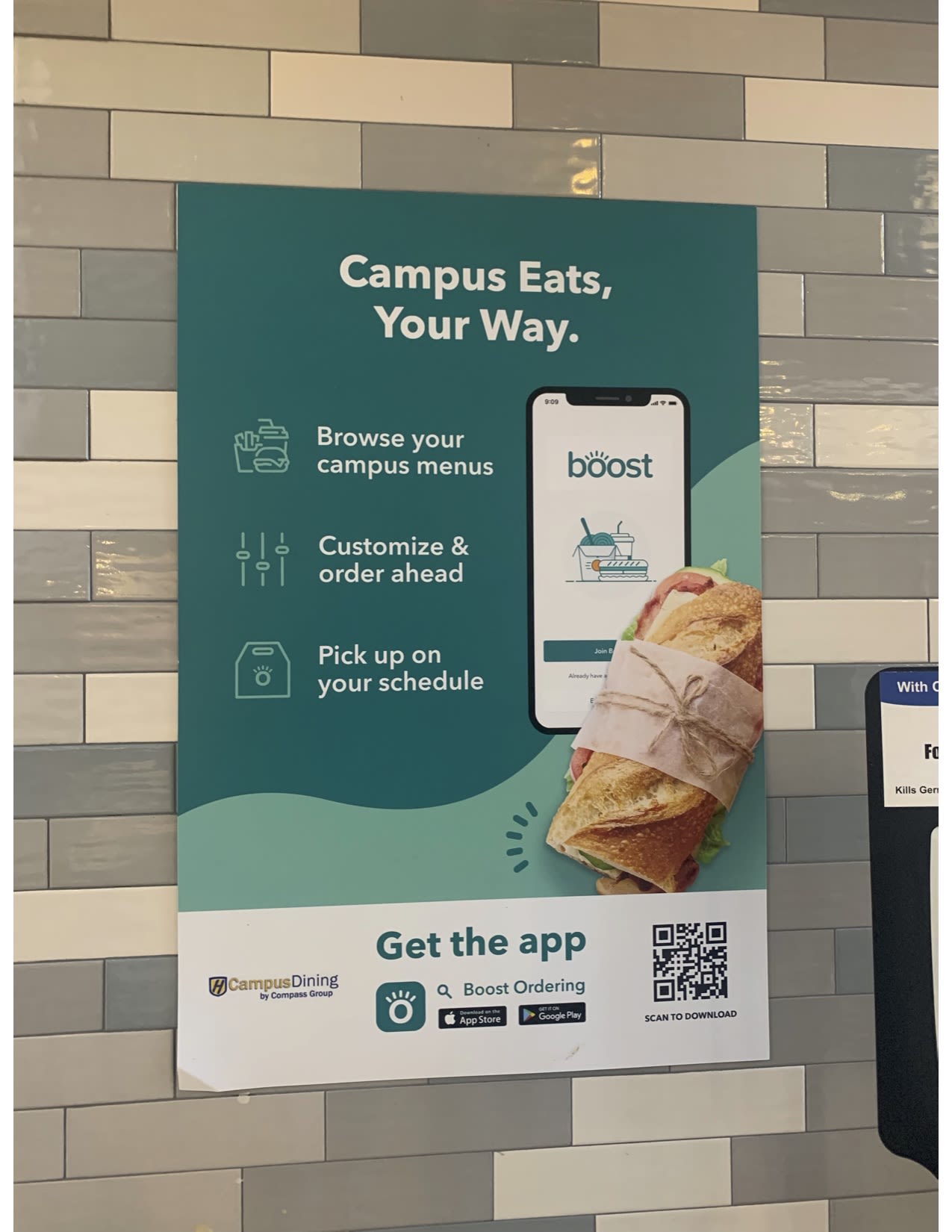
A flier advertising Boost in Hofstra's Student Center. Photo credit: Hannah Merwin
A flier advertising Boost in Hofstra's Student Center. Photo credit: Hannah Merwin
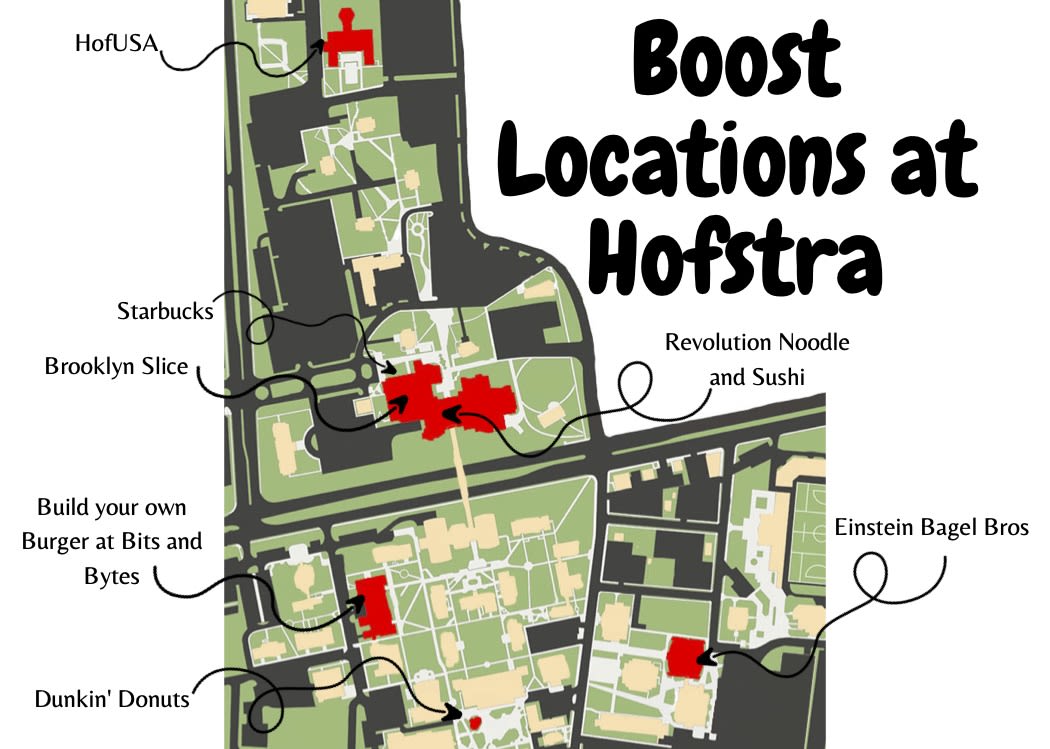
Infographic map of Boost locations at Hofstra. Photo credit: Hannah Merwin
Infographic map of Boost locations at Hofstra. Photo credit: Hannah Merwin
“I use boost roughly twice a week” said senior computer science major John Canzoneri. “The Boost app is pretty helpful when I’m in class trying to order food for when I’m done with class, so it is definitely useful that way."
The addition of the Boost app was made as part of “Together Again”, Hofstra’s plan to safely re-open campus after the Coronavirus pandemic forced the University to go online starting in March of 2020, and finish off the 2020-2021 school year entirely virtually. Signs can be seen all over Hofstra’s campus telling students about the Boost app.
As much as the app is advertised, however, a surprising amount of students don’t use the app. A poll conducted on Instagram concluded that of the 21 responses, only 14 used the boost app.
“I use the app a couple times a month,” said senior political science and journalism double major Caitlin O’Brein. “It’s great if I’m in the library and want to take a break. I usually order it while I’m doing work and talk a walk there once it’s ready.”

An Instagram poll about using Boost. Photo credit: Hannah Merwin
An Instagram poll about using Boost. Photo credit: Hannah Merwin
Boost is also helpful for the employees, who don’t find it too much to add on the extra orders, and instead appreciate the addition of the app.
“It definitely kind of reduces the line that we got going on here because it gets pretty packed,” said junior math major Andrew Dickerman, who has worked at Starbucks since September. “It definitely gives students who need to go to class or have something to do an option to still come here and get what they need, you know, without having to wait an eternity in line."
With the long lines and complicated orders, workers like Andrew can feel confident that the order they put out is correct, though Andrew did say that it can sometimes get overwhelming.
“It can get frustrating when it’s like, super packed here, and you need to get Boost orders done at the same time as you need to get the people in person’s orders done. Especially because one of our espresso machines is down. So, normally we use one for Boost and the other for in person, but right now that’s been a little hard. So definitely trying to get both of them done in a timely manner can get very frustrating, but other than that it’s okay.”
While most of the buzz around Boost is positive, some users find that the app can be a bit difficult to use. Right now, on the iOS App Store, the Boost app has a 3 out of 5 star rating, with 250 reviews.
“I think it’s a really good idea in concept,” said junior communications major Matthew McDermott. “The way that they show things on the menu I think could be overhauled. Because, let’s say I order Boost from Dunkin’ Donuts, it won’t let me order a donut for some reason, even though that’s the main attraction, and it doesn’t let you make your own order.”
Another common complaint about the app is the wait time, which Canzoneri says can be up to 2 hours at Starbucks.
“Once in a while, when I try to get Starbucks, it’s like a 2 hour wait just to get a coffee, and that’s not great.”
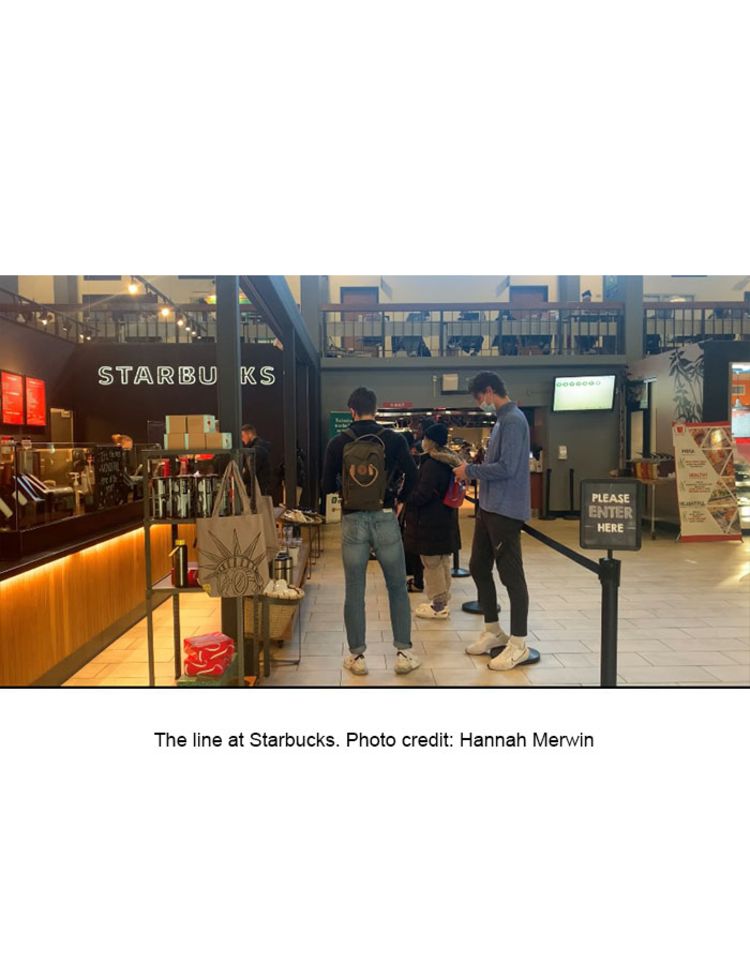
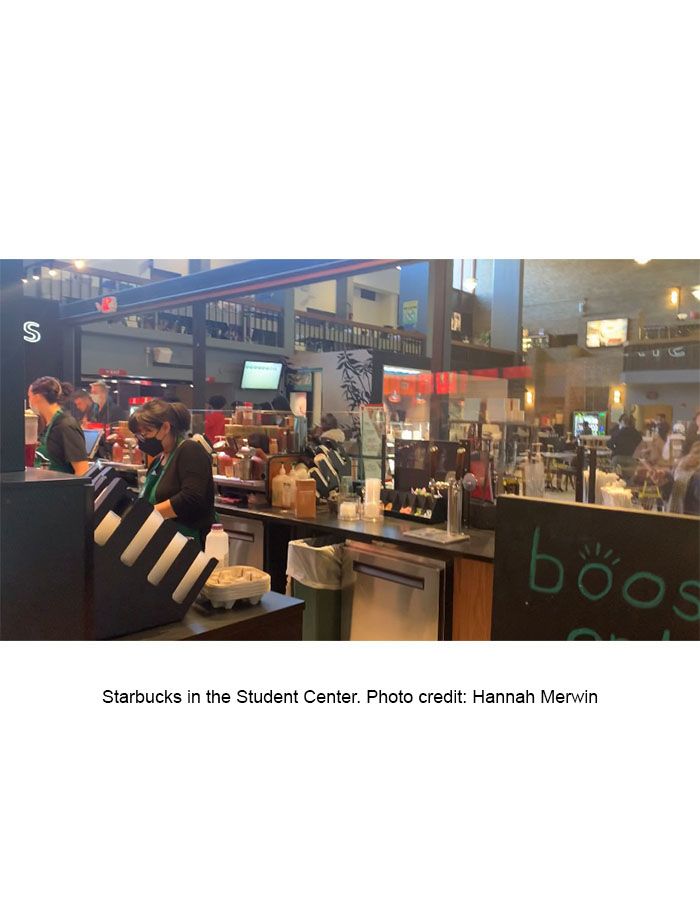
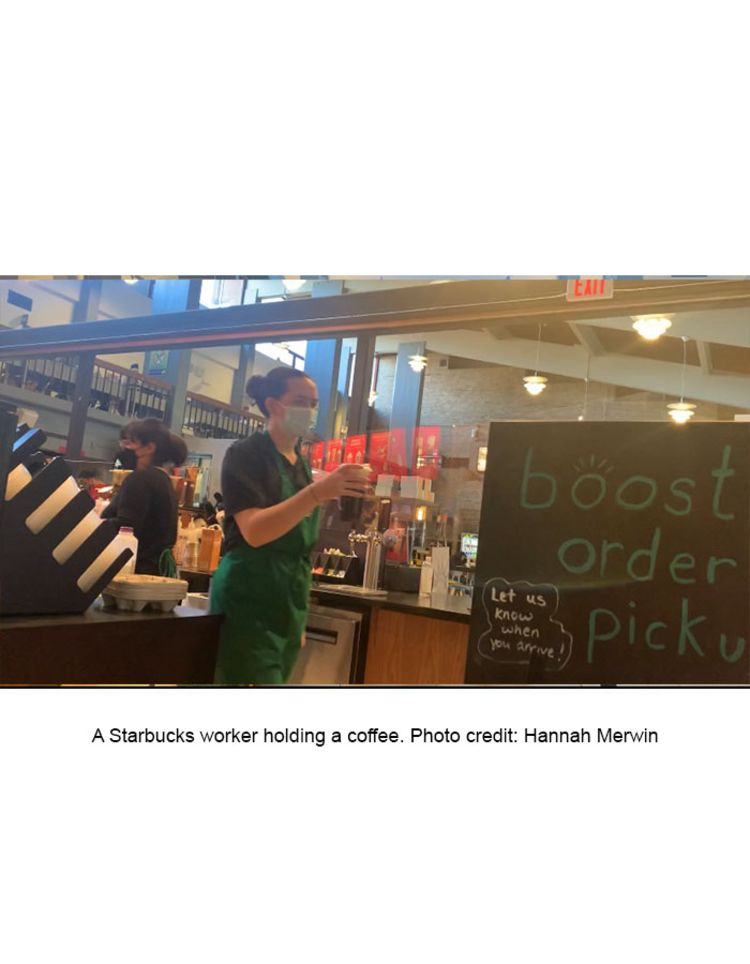
With some constructive feedback, Boost for the most part is received with praise from students who use the app to order and workers who receive the orders. Hofstra has put other practices in place when it comes to ordering food safely, including reducing max capacity in the Student Center, updating the kiosks to include more locations and regularly sanitizing and wiping down tables and chairs.
The Coronavirus pandemic forced everybody to take a step back, but allowed us to take two steps forward as a result. In person classes and a regular life on campus has been an important part of Hofstra’s return this fall semester, and Boost is a helpful addition in ensuring students are happy and healthy on campus.

Boost order pickup location at Starbucks in Hofstra's Student Center. Photo credit: Hannah Merwin
Boost order pickup location at Starbucks in Hofstra's Student Center. Photo credit: Hannah Merwin
